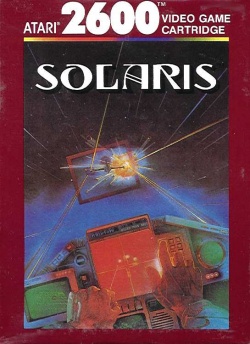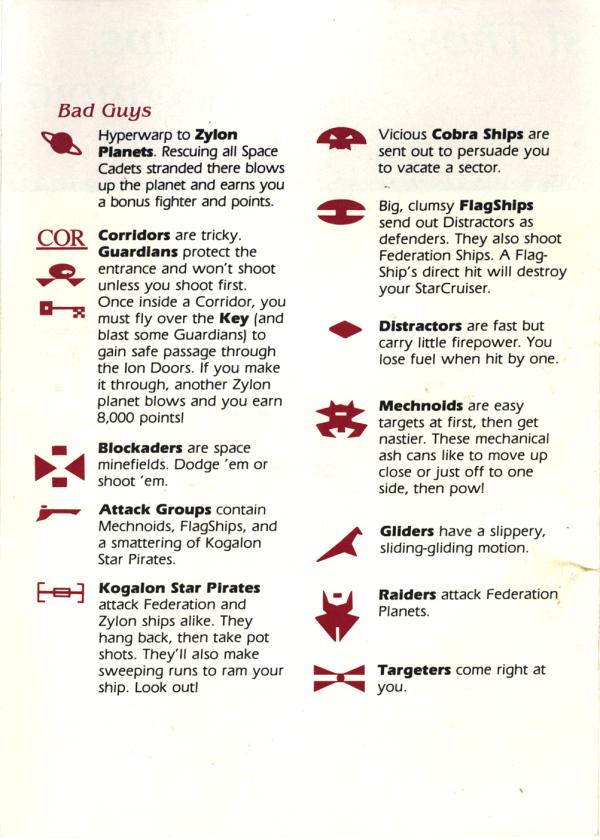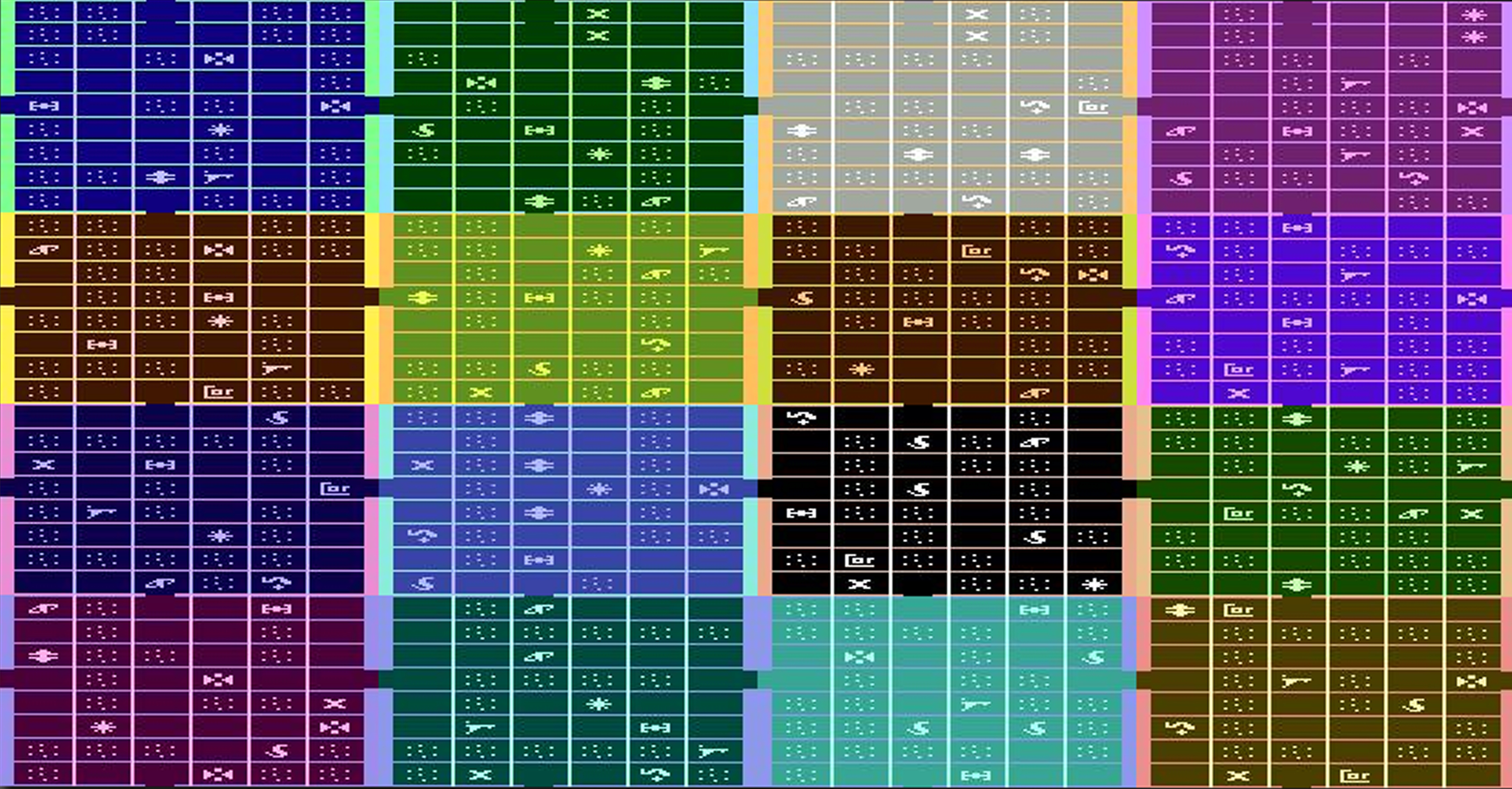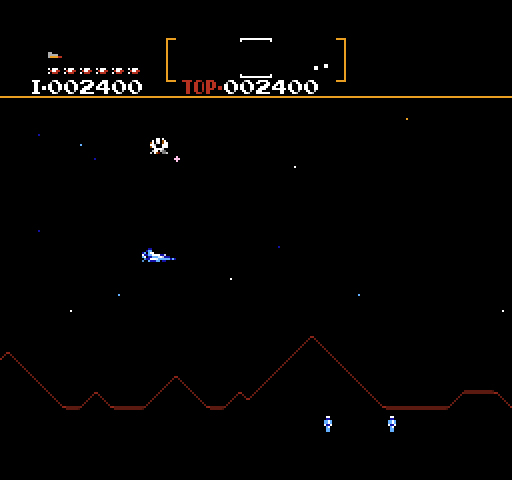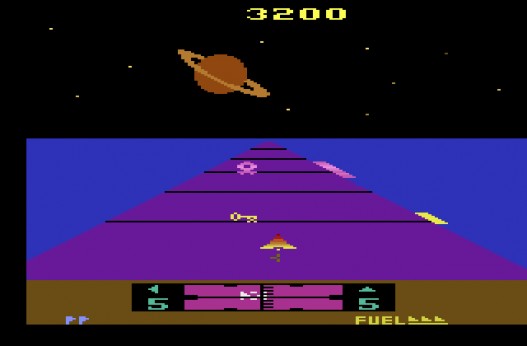
Review A Great Game Day – Solaris (Atari 2600)
When I first heard of Review a Good Game Day, I immediately knew what game I would be reviewing. From the first time I ever played Solaris for the Atari 2600 to today, I’ve always believed this it is the best game ever made for that system. Here’s why:
Background
If many of you aren’t familiar with Solaris, even those among you who did grow up with a 2600 in the house, it might have something to do with the fact that it was released on July 25th, 1986, which means many of you had already been helping a plumber save a princess on your NES for nearly a year. Luckily for me, who only got an NES in 1989, and gamers everywhere, Douglas Neubauer (the man behind the massively influential Star Raiders, to which Solaris is ostensibly a sequel) was still programming games for it.
Why would anyone bother to make a game for a dying console? Apparently, while Neubauer doesn’t know why Atari bothered releasing more games for the 2600, he was working only a few miles away from Atari’s headquarters at the time, so it looks like he just figured “Why not?” He had pitched the game years earlier, and Atari wanted it to be called “The Last Starfighter” as a tie-in to the movie; however, one week after they flew him down for a screening of the movie, Jack Tramiel bought the company and pretty much laid everyone off. To Neubauer, it looked like the end for Atari and video games. Yet, two years later, he gets a call and just like that, Atari bought the game we now know as Solaris.
Those were the good old days, folks. I can’t imagine something like this happening nowadays. Then again, I can’t imagine a single person programing a game by themselves of the course of a few months. They were simply different times, I guess.
Interesting sidenote: if you take a look at Solaris’ manual, you may get the impression that it’s, well, “crummy.” There’s a reason for this, as Neubauer explains. He submitted his notes on the game using the desktop publishing program the company he was currently working was basically pioneering. So these notes, along with his crude little drawings, were used practically unaltered for the manual when all he had meant them to be were simply notes.
Gameplay
First of all, this game is just massive. If you thought games like Pitfall! and Adventure were “big” for the Atari, you’ll need to put on your chinstraps on because your jaws just might drop. Here, just have a look at this video for a minute:
You may have noticed, after blasting off the surface of a planet, that you are brought to some kind of map. It looks pretty good for the Atari, right? There seems to be a couple of different enemy types, but what you won’t see in that video, because it isn’t long enough, are the 15 other quadrants that you will need to navigate back and forth through in order to finish the game. Luckily, there’s this:
Every single icon on that map is represents a cluster of enemies you need to defeat, each featuring different enemies or combinations of enemies, except for the ones that looks like a star. Those are planets. The friendly ones you can visit to refuel, but you must also defend them from attacks by those other icons. If a friendly planet gets attacked, you have 40 seconds to successfully defend it, and since this can happen even while you are in the middle of a fight with some other enemies in space, you don’t have much time.
Failing to defend a planet will make the entire quadrant become a “red zone”. Your screen will constantly flash red, which will be accompanied by loud thunder-like noises. To make matters worse, your ship’s controls are now inverted. As a kid, the effect was seriously nerve-wracking, and it’s just as effective today.
Other than visiting and defending friendly planets, you’l also encounter enemy planets where you need to rescue some cadets. Finally, there are also enemy corridor planets. These levels are extremely fast-paced, have a tonne of enemies, and require you to pass through gates and pick up a key. They always made me nervous.
Those other icons, as I’ve mentioned, are enemy groups that you engage in open space. They are all pretty varied from one another and require to move your ship in all four direction as you use the HUD to see how far ahead, above, below, to your right, or to your left the on coming enemies are from you. Once they get close enough, it’s your job to blast them to bits.
Finally, as you may have noticed, you have a fuel gauge. You also warp (or “hyperwarp,” as the manual calls it) fairly often. What you may not have noticed from the above video is that during the warp sequences, you control your ship and must do your best to keep it in focus. The less successful you are at doing so, the more fuel you waste. Lose all your fuel and lose a life.
Overall, the controls are great (you can even control your speed on the planetary levels), while the levels and enemies are ridiculously varied (meaning you won’t get bored doing the same thing over and over). You just can’t find a deeper or more engaging game for this console.
Graphics
If you bothered to watch even a second of that video, you should’ve immediately recognized that this game has by far the best graphics ever seen on the 2600. Hell, I’d go as far to say that it’s graphics are better than some I’ve seen in NES games.
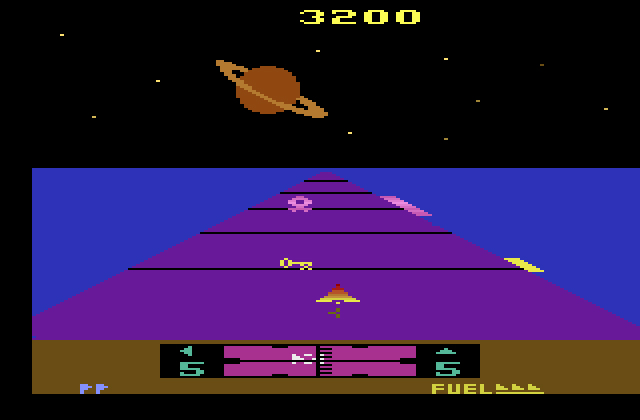
Above: Solaris for the Atari 2600. Below: Defender II for the NES. I know which space shooter I’d rather play.
Seriously, find someone who doesn’t know anything about this game, show them a gameplay video of Solaris, and ask them to guess which system the game was being played on: I highly doubt the 2600 will find itself among the early guesses.
Sound
You may have noticed that Solaris doesn’t have any music. That being said, there is never much silence in the game. Between your ship’s engine, the other enemies, explosions, hyperwarping, “red zones,” and the many other sounds you’ll encounter, having some kind of music playing over top of it all would just have made some kind of cacophonous mess. The sound effects are great by themselves and, again, are superior to anything else you’l find on the 2600.
Conclusion
I could go on and on about how great I think this game is (and trust me, I have on Twitter and to many people’s faces). There are many great games on this console, but most of them are great because they were the first to feature a particular gameplay mechanic or another, or they birthed an entire genre. Many of them are also fun on top of all that. Yes, Adventure was great, and so was Pitfall!, but to be honest, in the end, they still feel like Atari games, if you know what I mean. The medium was still in what I would call its infancy.
Solaris somehow managed to do so much more than any game before it for the console and shattered all our preconceived notions of what its hardware was capable of. In that respect, I would argue that Solaris is to the 2600 as Super Mario Bros. 3 was to the NES. In every way, they are their consoles most perfect games and both have gameplay, graphics, and sounds that surpass what we’d eventually find in many games from the subsequent console generation.
Virtually everyone has played Mario 3, and rightfully so, but Solaris has been largely ignored (obviously in part because of when it was released), but anyone who considers themselves a retro gamer owes it to themselves to play this game. It isn’t that difficult to find used (with CIB copies on Ebay going for under $10). If you can’t be bothered, just go emulate the crap out of it. I don’t care, just as long as you play it, dammit!
